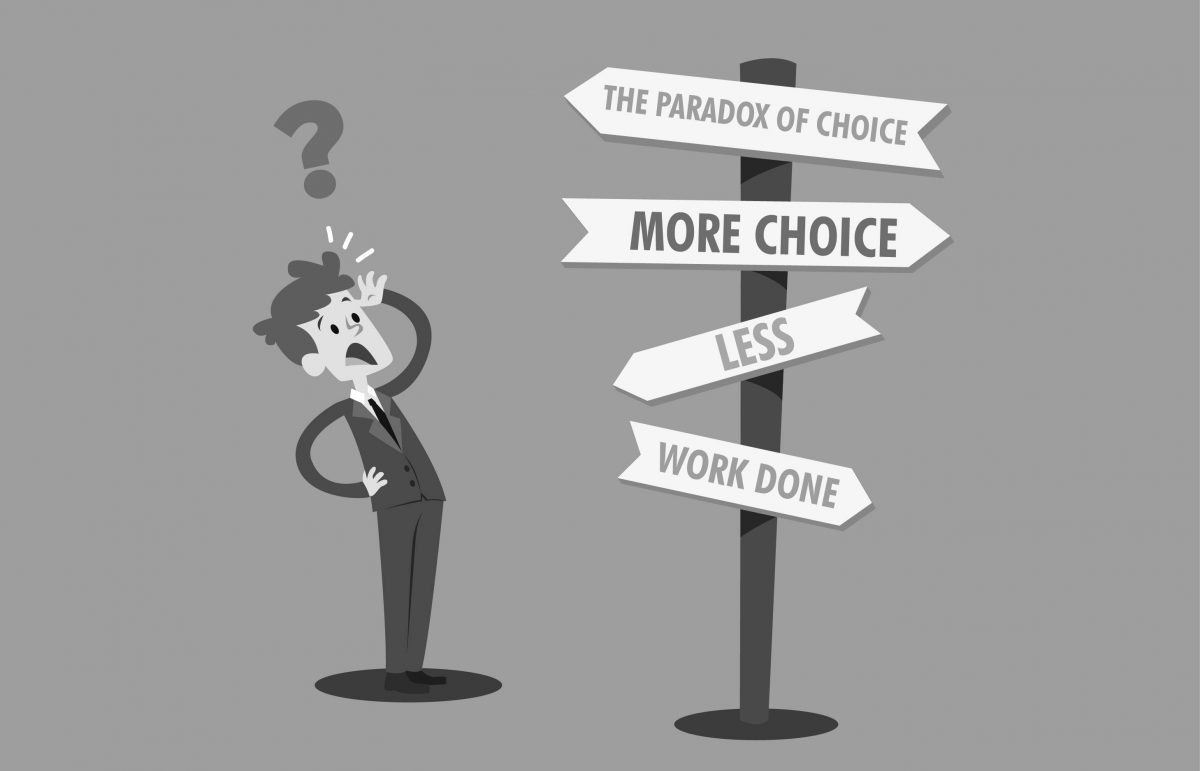Introduction
In our modern world, we are inundated with an abundance of options and choices. While having choices is often seen as empowering, it can also lead to decision paralysis and dissatisfaction. This phenomenon is known as the Paradox of Choice, a mental model deeply rooted in human psychology. Understanding this concept is crucial for making effective decisions and avoiding the pitfalls of analysis paralysis. In this blog post, we will explore the Paradox of Choice, its prevalence in our lives, its impact on decision-making, and strategies to navigate this mental trap.
Defining the Paradox of Choice and its Relevance in Decision-Making
The Paradox of Choice refers to the phenomenon where an increasing number of options can lead to decision-making difficulties, decreased satisfaction, and a higher likelihood of regret. The concept suggests that while having choices is desirable, an overabundance of options can overwhelm individuals, making it harder to make decisions and diminishing the overall quality of those decisions.
The Paradox of Choice is relevant in decision-making processes as it highlights the negative consequences of excessive options. Understanding this mental model allows individuals to approach decision-making with a more mindful and deliberate mindset, mitigating the potential negative effects of choice overload.
Anchoring the Paradox of Choice in Human Psychology
The prevalence of the Paradox of Choice in our day-to-day lives can be attributed to several psychological factors. One primary factor is the fear of making the wrong decision, driven by the regret aversion bias. This bias leads individuals to feel anxious about potential regret and, as a result, makes decision-making more challenging when faced with numerous options.
Additionally, cognitive biases such as analysis paralysis, decision fatigue, and the status quo bias contribute to the Paradox of Choice. These biases can hinder decision-making by causing individuals to procrastinate, experience mental exhaustion, or stick with familiar choices rather than exploring new options.
Examples of the Paradox of Choice in Various Contexts
- Personal Life Decisions: Consider an individual shopping for a new smartphone. The abundance of options, each boasting different features and price points, can overwhelm them. They may spend an excessive amount of time researching, comparing specifications, and reading reviews, ultimately feeling unsatisfied with their final choice and wondering if they made the right decision. The abundance of choices in this scenario leads to decision paralysis and decreased satisfaction.
- Business Scenarios: In the business world, the Paradox of Choice can manifest when organizations offer an extensive range of products or services. While offering a variety of options can attract customers, it can also create decision fatigue and dissatisfaction. For example, an online retailer with an extensive inventory may overwhelm customers, making it harder for them to choose and potentially leading to lower conversion rates or customer loyalty.
- Public Policy-Making: Public policy decisions can also be affected by the Paradox of Choice. When designing policies, governments may face the challenge of balancing multiple options and stakeholder preferences. An excess of choices can delay decision-making processes and lead to suboptimal policies or indecisiveness, resulting in missed opportunities or inefficiencies in governance.
Mental Biases and Psychological Underpinnings
Several mental biases contribute to the Paradox of Choice. The fear of missing out (FOMO) bias makes individuals reluctant to make decisions for fear of missing out on a better option. The sunk cost fallacy leads individuals to overvalue their initial investment of time and effort into researching options, making it harder for them to let go of alternatives and settle on a choice.
Other biases, such as confirmation bias and information overload, can also play a role. Individuals may selectively seek information that confirms their preconceived notions or become overwhelmed by the sheer amount of information available, hindering their ability to make a well-informed decision.
Strategies to Identify and Avoid the Paradox of Choice
- Set Clear Decision-Making Criteria: Before embarking on a decision-making process, identify the key criteria that matter most to you. This helps to narrow down the options and streamline the evaluation process, reducing decision complexity.
- Limit Information Intake: Be mindful of the amount of information you consume. Set boundaries to prevent information overload and focus on acquiring only the essential information needed to make an informed decision. This approach reduces decision fatigue and prevents analysis paralysis.
- Embrace Satisficing: Instead of striving for the perfect choice, adopt a satisficing mindset. Seek options that meet your minimum criteria for satisfaction rather than attempting to find the absolute best option. This approach can alleviate the pressure of finding the perfect choice and lead to more timely and satisfactory decisions.
- Utilize Decision Tools: Leverage decision-making frameworks, such as pros and cons lists, decision matrices, or cost-benefit analyses, to structure your decision-making process. These tools provide a systematic approach to evaluate options objectively and reduce the burden of choice.
Conclusion
The Paradox of Choice, deeply rooted in human psychology, poses challenges to decision-making in our complex world. Understanding this mental model is crucial for making effective decisions that maximize satisfaction and minimize regret. By recognizing the impact of excessive options, anchoring biases, and decision-making fatigue, individuals can employ strategies such as setting clear criteria, limiting information intake, embracing satisficing, and utilizing decision tools to navigate the Paradox of Choice successfully.
Awareness and active avoidance of this mental trap are key to overcoming decision paralysis and achieving better outcomes. By applying these strategies, individuals can navigate the abundance of choices in a more informed, efficient, and fulfilling manner, enhancing their decision-making processes and overall quality of life.
